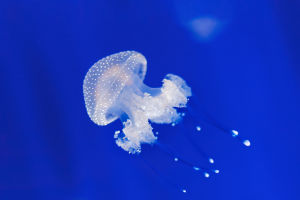The White-naped Crane is a medium-sized crane, with adults usually measuring between 110 and 130 cm (43 and 51 in) in length and weighing between 4 and 6 kg (9 and 13 lb). Their wingspan is 190-215 cm (75 to 85 in).
The feathers of the white-naped crane are mainly gray, and the head and neck are white. The nape is black, which is how the species got its name. They have patches of red skin on their foreheads and patches of bare skin around their eyes.
The beak of the white-naped crane is long and pointed, gray-black in color. It is used to detect and peck for food. The legs and feet are long and black. They are used for walking and wading in shallow water.
White-naped cranes make a loud and distinctive call, often described as a trumpet. They also use a range of other vocalizations to communicate with each other. It is a highly social bird, usually in pairs or small flocks. They are migratory birds, traveling long distances between breeding and wintering grounds.
Overall, the white-naped crane is an elegant and unique bird species that is highly valued for its cultural significance and ecological role in wetland ecosystems.
The white-naped crane is a bird found in East Asia, especially in China, Japan, and Korea. Here are some of their living habits:
1. Habitat: White-naped cranes like to live in wetlands, including swamps, swamps, and shallow lakes. They also like to nest in areas of tall vegetation that can provide cover and protection from predators.
2. Diet: Their diet consists of plant matter, including roots, tubers, and seeds, as well as small animals such as insects, frogs, and fish.
3. Social behavior: White-naped cranes are highly social birds, usually in pairs or small groups. During the breeding season, they form monogamous pairs and defend their territory.
4. Reproduction: White-naped cranes reproduce once a year and lay 1-3 eggs in nests built with grass and reeds. Both parents take turns incubating the eggs, which hatch after about a month. The chicks are able to leave the nest within a day or two after hatching and are cared for by both parents.
5. Migration: White-naped cranes are migratory birds, usually spending summer in their breeding grounds in the north and winter in the south. Some populations migrate thousands of kilometers between breeding and wintering grounds.
6. Threats: White-naped cranes are considered a vulnerable species due to habitat loss and degradation, predation, and collisions with power lines. Conservation efforts are underway to protect their habitat and reduce threats to their populations.
The white-naped crane is listed as a vulnerable species by the International Union for Conservation of Nature. The species faces a range of threats including habitat loss, degradation and fragmentation, hunting and poaching, disturbance, and collisions with power lines.
Estimates of the global white-naped crane population range from 5,000 to 6,000. The species has experienced declines in many parts of its range, notably in China, where its population has declined by about 50% over the past three generations (about 30 years).
Conservation efforts are underway to protect the white-naped crane's habitat and reduce threats to its survival. These include the establishment of protected areas, restoration of wetland habitats, and public education and outreach programs to raise awareness of the importance of conservation.
The white-naped crane is also listed in Appendix 1 of the Convention on International Trade in Endangered Species (CITES), meaning international trade in this species is strictly regulated.


